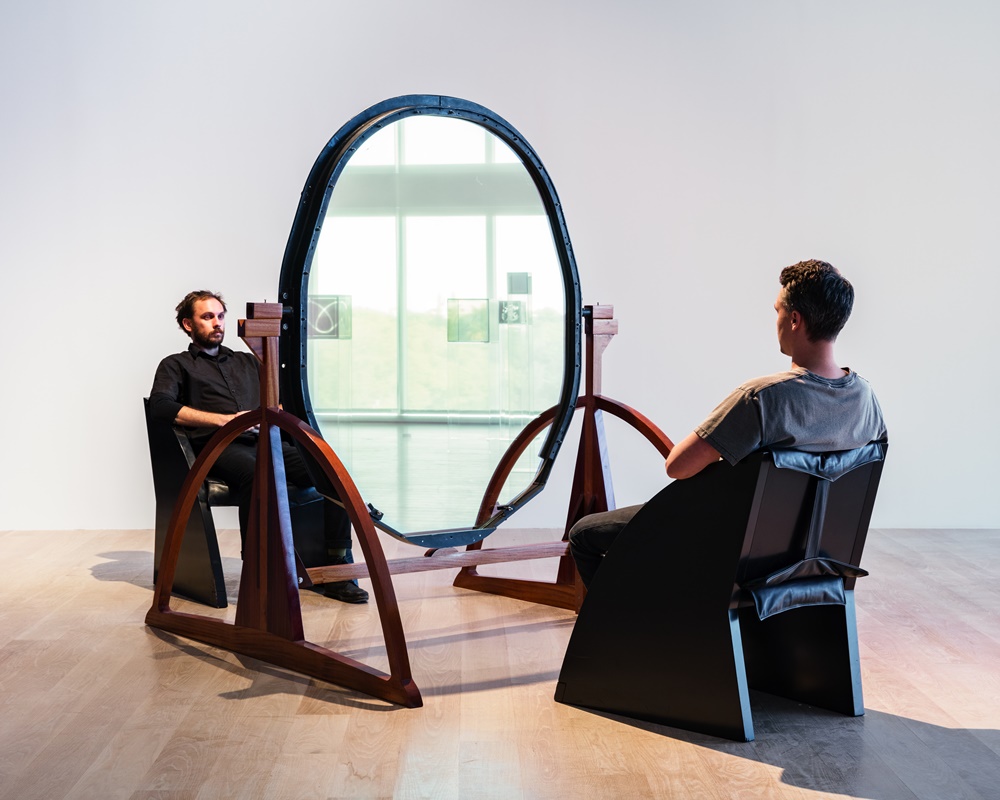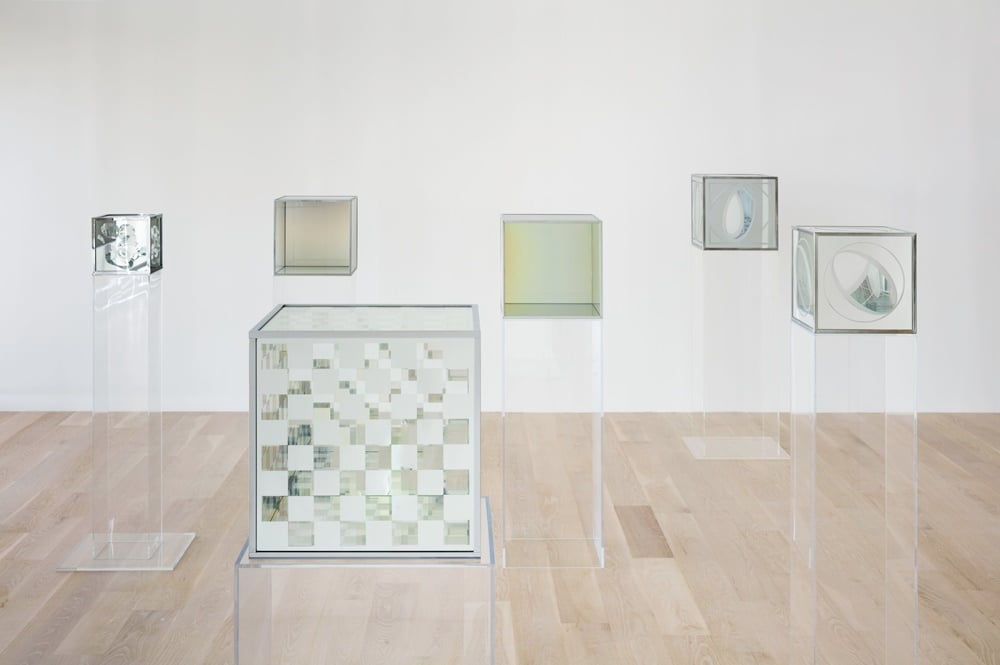On View
‘My Work Has Always Been My Teacher’: Larry Bell on Science, Experimentation, and His New Retrospective at ICA Miami
The artist talks about the surprising influences that have shaped decades of boundary-pushing works.

The artist talks about the surprising influences that have shaped decades of boundary-pushing works.

Eileen Kinsella

Larry Bell, a prominent member of the Light and Space movement that emerged out of Los Angeles in the 1960s and ’70s, may be best known for his meticulously crafted glass cubes. But there is far more to the artist’s decades-long practice then that—including large-scale colored glass installations and audiovisual experiments—which are now on view at the Institute for Contemporary Art Miami in a much overdue retrospective, “Time Machines.” Bell’s work will also be featured prominently at the upcoming Art Basel Miami Beach, in the booths of Pace and Hauser & Wirth.
We caught up with Bell, who spoke to artnet News from his studio in Taos, New Mexico, about a lifetime of learning and experimentation, the influence of science on his work, and and his extensive guitar collection.

Installation view of “Larry Bell: Time Machines” at the Institute of Contemporary Art, Miami. Photo: Fredrik Nilsen Studio.
The ICA show is the first major comprehensive US museum survey of your work in more than 20 years. How did it come together?
When ICA approached me about the show, the curators [Alex Gartenfeld and Gean Moreno] were interested in showing things people didn’t know about. I spontaneously mentioned three environments I made years ago and that I had made more than once in different locations: the Black Room, the Leaning Room, and the waterfall piece [Hydrolux]. There is a whole generation of new viewers and I wouldn’t mind seeing these works again. It’s very exciting—they translated each one differently than in the original installation, which in themselves were total improvisations. So these are extensions of the improvisations. Also, in the first installation, each one was determined by the space I had to work with in my studio. What I presented to them was essentially a set of visuals. The pieces are different by nature of the space they’re in.
Were there any particular challenges you had to work through?
Yeah. All of it. In one case, the materials used to create some of the effects on the Leaning Room, specifically the paint pigments, were no longer available, so we had to use things that replicated somewhat the feeling of what we used before. We used colors that were as close as memory allowed. They worked just fine. You have to trust yourself a lot and you have to trust the people you’re working with. Most of the visuals of this were expressed by the passage of a few photographs from me to the preparators. They interpreted what they saw based on the space they had to work. It all worked out great. I thought it was terrific and they did a damn good job.
When you were starting out a lot of the cutting-edge technology that was being innovated in California had to do with NASA and aerospace technology, a key inspiration for the Light and Space and Finish Fetish artists. Today, that innovation is taking place in Silicon Valley and in digital formats. Do you follow that? Are tech industry people interested in your work?
I don’t know. I’ve heard that before but I’m not so sure that that had a compelling force to the artists. There were a few people that Robert Irwin was very close to who studied habitability of life, scientists who were working on the moon landing and the conditions astronauts were going to have to live in. There was one guy, Dr. Edward Wortz, who was very much involved with the life support system that the astronauts used. In conversation he told me about two tribes of primitive people in South America that had learned how to control the flow of blood when they were wounded. They knew how to contract their muscles at will, to stop the flow of blood. That was a profound story to me. It occurred to me that if you could feel and control the muscles in your sides or legs, why couldn’t you learn to control the muscles responsible for the dilation of your pupils? So that you could walk into a dark space and immediately have your eyes adjust and see whatever light is there. I began experimenting in a dark room and I timed it—it went from 12 minutes to 12 seconds after six months. I wasn’t ever aware of the feeling in my eyes. I was only aware that it was taking less and less time to see these things.
The original improvisation, titled The Black Room, which was shown at MoMA in 1970 has been recreated at ICA. The viewer is immersed in total darkness, except for a small line of light emitted from a reflective glass rod.
How have visitors responded to The Black Room at ICA so far?
With wonderment. And questions like, “How did you do that?” “What did you do in there to make that do that?” I didn’t know exactly what that meant. I only know what my intention was 40 years ago.

Installation view of “Larry Bell: Time Machines” at the Institute of Contemporary Art, Miami. Photo: Fredrik Nilsen Studio.
What have you been working on recently?
I’ve been experimenting with these collages where the imagery just appeared, and after three or four years, I realized that the images were informed by my collection of musical instruments (it includes more than 200 guitars). I hung a room in my studio with these new pieces and by chance I brought some of my old acoustic guitars in to the room and leaned them against the wall under these images. All of a sudden I realized what the relationship was. I never put it together before.
What do you hope audiences take away from the ICA show and the opportunity to see so much of your work together at once?
I hope people enjoy the experience. I have no control over what people think so I have no expectations. My work has always been my teacher. This show is simply an extension of the classroom.
What’s next for you?
I see the studio activity as a continuum. One thing leads to another. Each thing presents a whole new kind of lesson and so what you end up with is a very long series of evidence of where your mind was at any given time in your career. Essentially all I do to keep track of those things is date them.
Judy Chicago is having a show at the same time at the ICA and she recently recounted to a reporter that you were born just months apart in the same hospital in LA. But that you’re on the third floor and she’s on the second and that, for years, she has “been trying to get out from under you guys.”
[Laughs] She’s one of my favorite people! She’s never been under my thumb, I can tell you that!
“Larry Bell: Time Machines” is on view at ICA Miami through March 10, 2019.